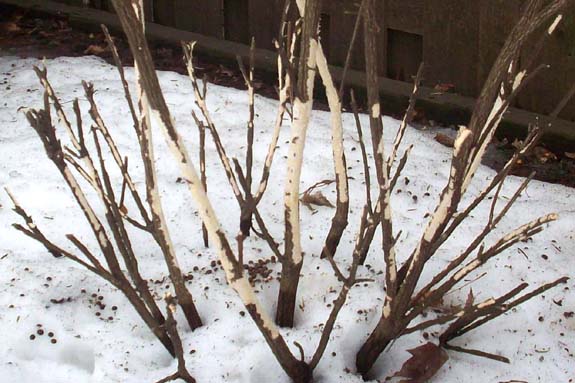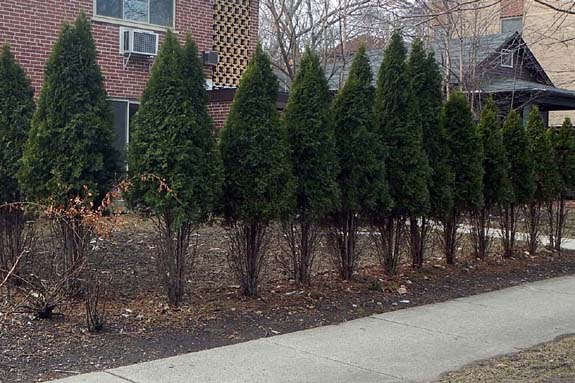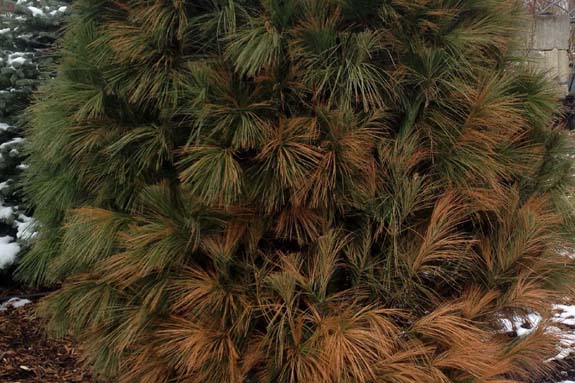After surviving one of the worst winters in Chicago history, the cold weather really took its toll on our landscapes. Winter burn and rabbit damage on many ornamental trees and shrubs are the worst we have seen in recent years. Due to the excessive amount of snow and extremely cold temperatures, many of our beautiful shrubs are not looking their best.
Rabbit damage has been especially dramatic this winter because of the heavy snow cover. Rabbits naturally have vegetation that they can feed on in the early spring, but this season they had no other option than to eat whatever they could to survive. Even plants that are not typically eaten by rabbits have significant damage. Most damage has occurred on Hawthorns, Crabapples, Burning Bush and Cotoneasters. Because of the large amount of snow fall the rabbits were able to get to higher areas on plant stems and trunks than they typically can reach. Winter rabbit damage can usually be identified in a few different ways. A few sure tell sign to know if a rabbit is to blame is to take a look base of your plants. Sometimes it’s difficult to tell, especially when they have been eaten completely to the ground. It will look as if they the plant were neatly pruned at a 45 degree angle just above the height of the snow. Rabbits typically eat only what they can easily reach, so most damage occurs on the first 1-2’ft depending on the amount of snowfall in your area (the more snow, the higher up the rabbit damage). If the rabbit left the branches, bark is typically stripped away from the stems and trunk of the plant. It’s best to contact a professional landscaper to evaluate the health and overall condition of the plant, in order to determine if the plant needs to be replaced.
Winter burn of evergreens was also a problem this season. Winter burn is seen on many boxwood, arborvitae, and yews. Brown leaves/needles are a sure tell signs of winter burn. An evergreen plants needles continue to transpire (lose water) during the winter. The needles (modified leaves) must replace water by pulling it up through the roots. However, when the ground was frozen over the winter this natural process could not happen. When the days are sunny and the ground is frozen the evaporation from the leaves increases and the water cannot be replaced. The needles dry out and discolor. The brown foliage is most noticed on the sunny or wind exposed side of the plant. This winter the combination of wind, below zero temperatures, and lots of sun are to blame for so much winter burn on so many hardy plants. At this time the plant may look like its dying, but a few easy steps can be taken to rectify the situation. First you must wait until the new buds break through (any new growth). After the plant looks like it is returning to life you may then remove any dead growth all the way to where it is green on the plant. The pruning may be a little extensive, but as soon as the summer growth occurs the plant should grow back to its healthy form.
If you notice winter burn or rabbit damage please feel free to contact us for an evaluation.



